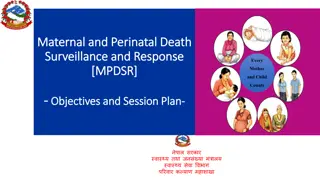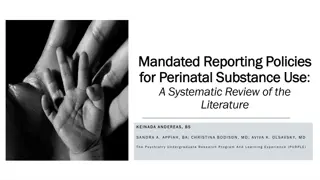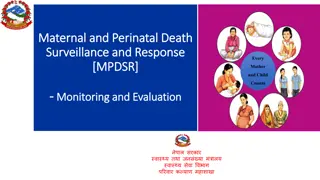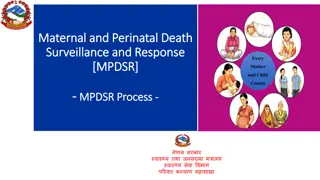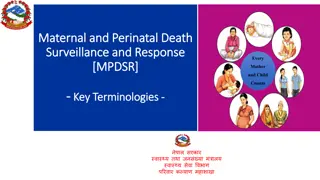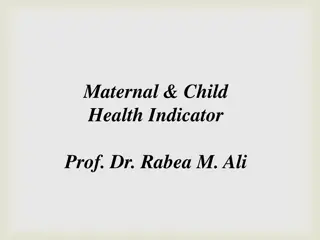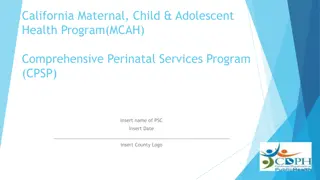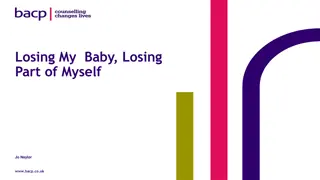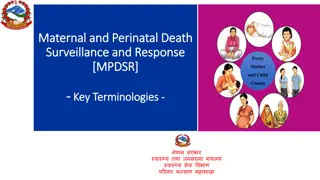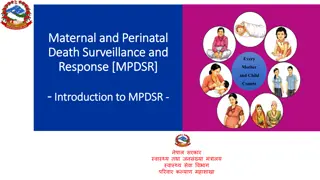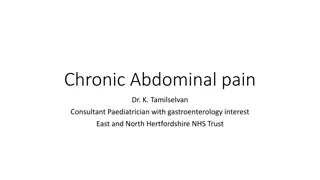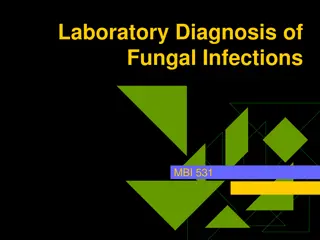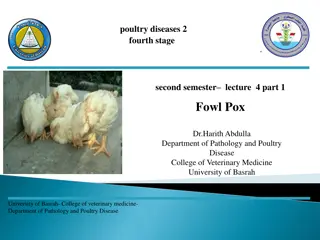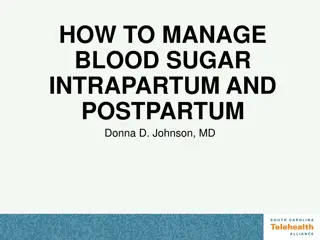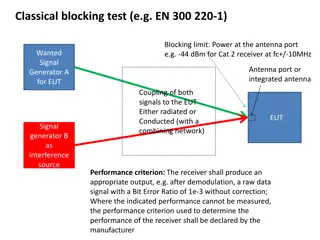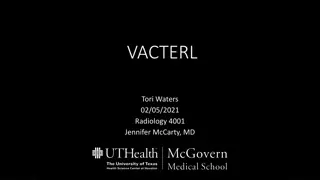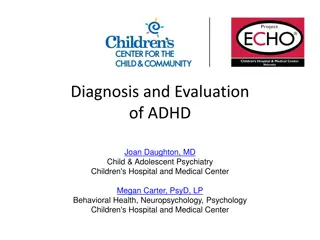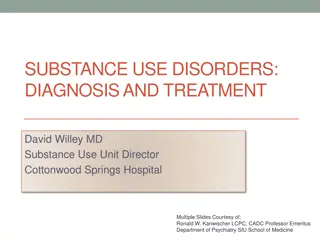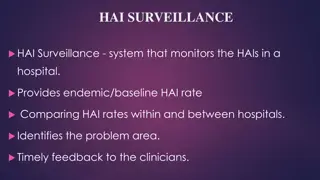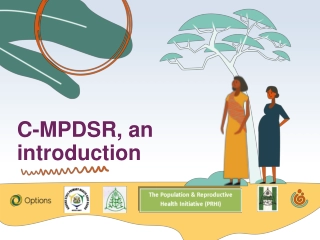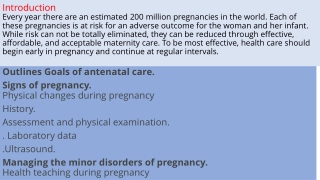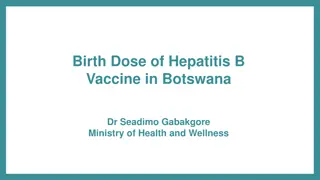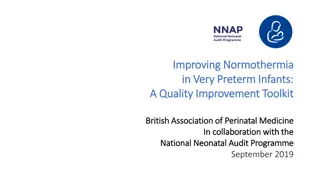Diagnosis Criteria for Perinatal Asphyxia
Perinatal asphyxia refers to the interruption of oxygen supply to the fetus or newborn, leading to metabolic consequences and potential multiorgan dysfunction and long-term neurological issues. The American Academy of Pediatrics (AAP) and the American College of Obstetrics and Gynecology (ACOG) have established criteria for diagnosing perinatal asphyxia, including metabolic acidosis, encephalopathy, cerebral palsy, exclusion of other causes, sentinel events, Apgar scores, multisystem failure, and early imaging evidence. Additionally, the WHO defines perinatal asphyxia as the failure to initiate breathing at birth. Tools like the Thompson score are used to assess severity, with interpretations ranging from mild to severe. Sarnat and Sarnat staging further classify the condition into different stages, such as Stage I.
Download Presentation

Please find below an Image/Link to download the presentation.
The content on the website is provided AS IS for your information and personal use only. It may not be sold, licensed, or shared on other websites without obtaining consent from the author. Download presentation by click this link. If you encounter any issues during the download, it is possible that the publisher has removed the file from their server.
E N D
Presentation Transcript
Criteria for diagnosis of perinatal asphyxia
Perinatal Asphyxia Interruption in oxygen supply to tissues in the foetus or newborn with attendant metabolic consequences which may result in multiorgan dysfunction in the immediate newborn period as well as long term neurologic sequelae.
American Academy of Paediatrics (AAP) and the American College of Obstetrics and Gynaecology (ACOG) 4 essential criteria and 5 additional criteria
4 Essential criteria Metabolic acidosis (pH < 7.0 and base deficit 12 mmol/L) in umbilical artery sample Moderate or Severe encephalopathy (Thompson score (appendix 1) or Sanart and Sanart staging (appendix 2) Cerebral palsy of spastic quadriplegia or dyskinetic type Exclusion of other etiologies.
5 additional Sentinel event intrapartum Abrupt changes in foetal heart rate Apgar score 3 beyond 5 min; Multi-system failure within 72 h of life Early imaging evidence
Cornerstone Severe metabolic acidosis (pH < 7.0 and base deficit 12 mmol/L) at birth in a newborn exhibiting early signs of moderate or severe encephalopathy
WHO DEFINITION Failure to intiate breathing at birth
Thompson score Score Sign Tone LOC Fits Posture 0 1 2 3 Flaccid Comatose Normal Normal None Normal Hyper Hyperalert, stare Lethargic < 3/day Fisting, cycling Hypo >2/day Strong distal flexion Absent Absent Absent bites Decerebrate Moro Grasp Suck Normal Normal Normal Partial Poor Poor Respiratio n Normal Hyperventilation Brief apnea IPPV (apnea)
Thompson score interpretation Mild 1 10 Moderate 11- 14 Severe > 15
Sarnat and Sarnat Staging Stage I Stage II Stage III Alertness Hyperalert Normal or increased None Dilated, reactive Regular Lethargy Coma Muscle tone Hypotonic Flaccid Seizures Frequent Small, reactive Periodic Uncommon Variable, fixed Apnoea Pupils Respiration Duration < 24 Hours 2 - 14 Days Weeks
Adaptation WHO If a baby required bag and mask ventilation at birth AAP/ACOG No facilities for most criterion 1 of 4 essential Most referral centres don t do APGAR scoring Neuroimaging not widely available


